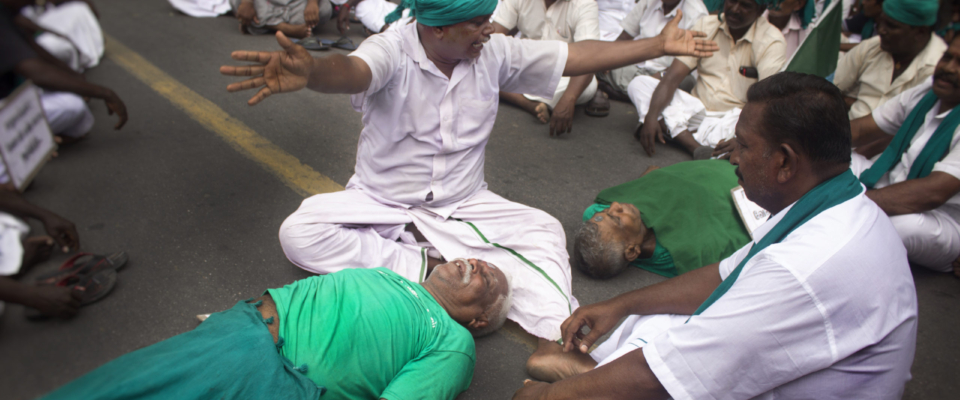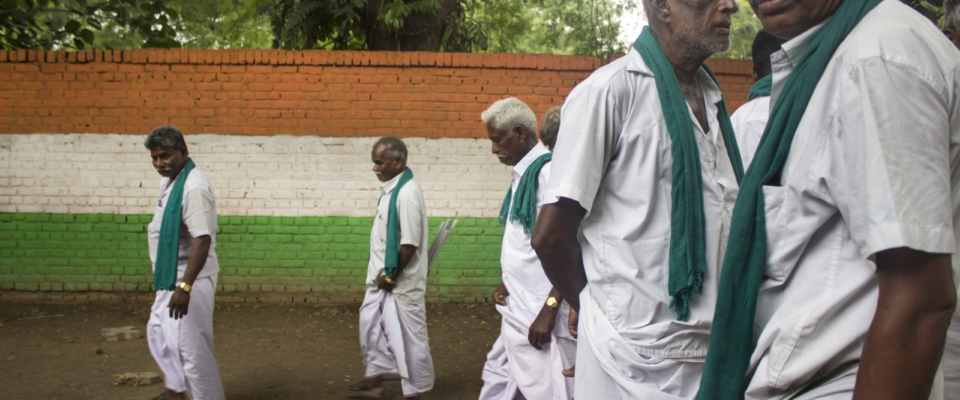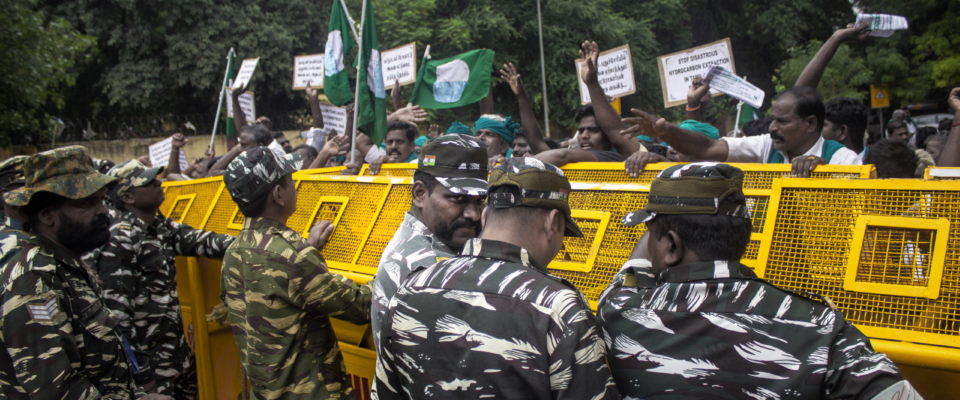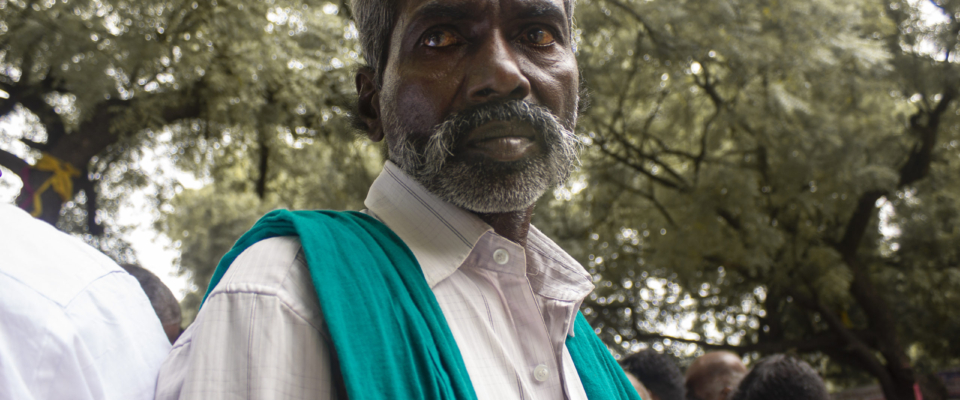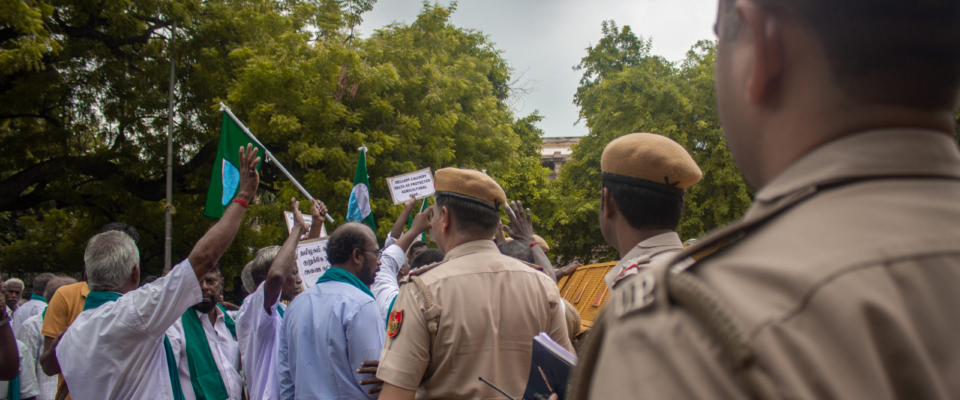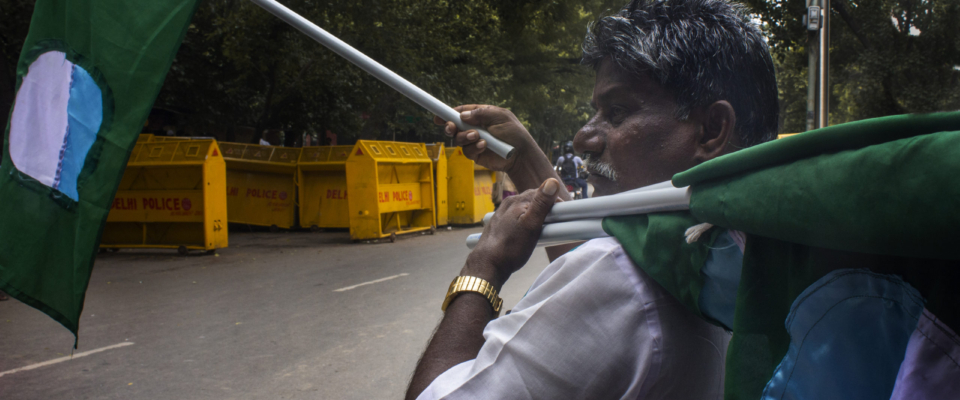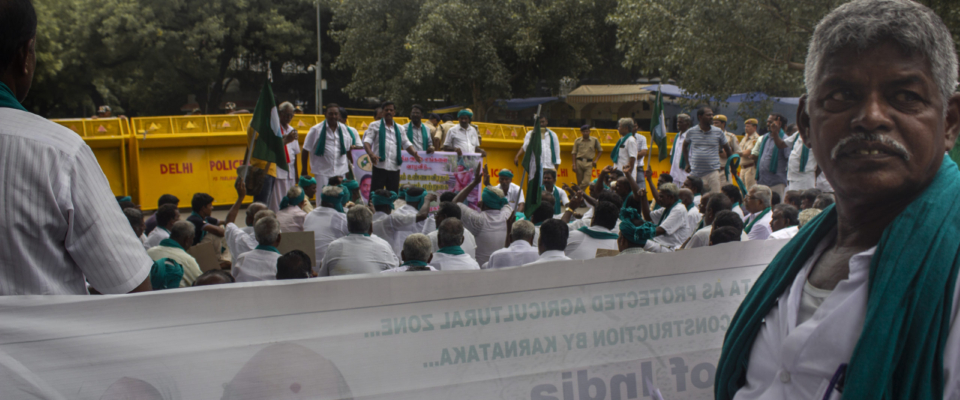On this overcast day in July, different shades of green contrasted with a grey sky at this busy junction behind New Delhi’s iconic Jantar Mantar. There were the trees, of course. The khaki of the police uniforms and the camouflage of the CRPF ones. Today’s striking new entrant to the club was the distinct teal draped around the necks of almost everyone gathered here, including the gentleman purposefully walking towards me.
‘Which media house are you from?’
I shook my head. ‘No, no, I’m a student. I was walking around and came to see what the protest was about’.
He glanced at my camera. For a moment, I could see the disappointment in his eyes. He turned around and started walking away, but after a few seconds glanced back, smiled, and said, ‘I’m happy you’re here. We’re doing this for you’
On 25th May 2016, two years before the anti-hydrocarbon extraction protests in Jantar Mantar, Minister of Petroleum and Natural Gas Dharmendra Pradhan inaugurated the Central Government’s Discovered Small Field policy. Billed as “suitable to the Indian geological situation while [focused] on attracting private and foreign investment along with best technologies in the sector”, the policy acknowledged that “conventional hydrocarbons would continue to play an important role in achieving [India’s] energy security objective”, thus grounding Discovered Small Field’s goal of “monetising…hydrocarbon resources locked for years” in India, hitherto highly reliant on imports. The following year, the Centre announced its plan to award contracts for hydrocarbon extraction in land and offshore regions across the country, sparking protests in Neduvasal, Tamil Nadu, the village district where the project was to be implemented in the Cauvery basin. Hydrocarbon extraction has shown to have detrimental effects on the environment and crop land, contaminating water supply, as well as resulting in the disempowerment of local populations at the hands of private companies.
Hydrocarbon extraction in the Cauvery basin has faced massive opposition in the last few years due to its adverse impact on the environment and on the livelihoods of farmers and fishermen in the area, but I first heard about it in July of 2019, when I happened to cross paths with this protest. Between then and now, authorities have become even more brazen when it comes to granting clearances for so-called ‘development’ projects in ecologically sensitive areas. The ‘ease of doing business’ has become the new mantra that our leaders swear by, so much so that the new EIA notification seeks to legitimise commercial projects that actually violate norms by giving them a chance to get post-facto approvals.
Our environment is increasingly being seen as a resource to be monetised instead of something with intrinsic value in its very existence. For something so vast, so complex, and so essential to our survival to be brazenly attacked and taken for granted should make us speak up with urgency, not resign ourselves to silence. It is this complicity that is leading to what is happening—not just in Tamil Nadu, but across the Cauvery basin and indeed the entire country—going unchecked and unquestioned. As stakeholders of our environment, our concerns have to continue to be voiced, not only by us but for generations to come as well. As we may recall, we do not inherit the earth from our ancestors, but rather we borrow it from our children.
Sanjana is a photographer/filmmaker and educationist. She has made multiple short films on education and grassroot-level school innovations, primarily with the Government of Delhi. Her photography cuts across genres and has been published on various platforms by CNN, The Hindu, The Indian Express, the UNHCR and the Government of Delhi



